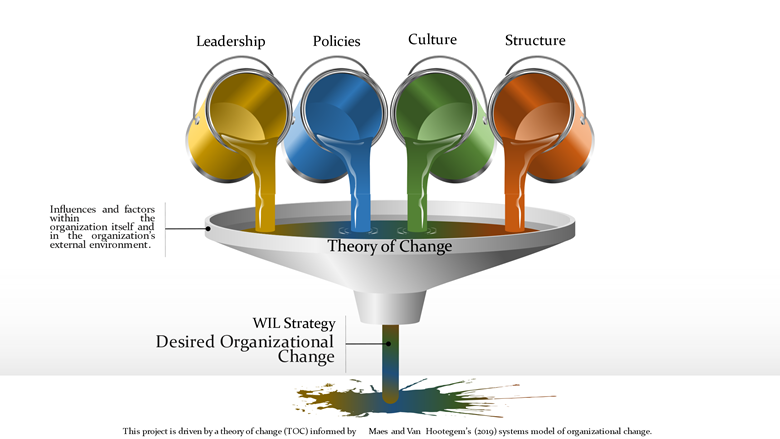About the Project
Driving Country Level Change, WIHL is a project funded by the Bill & Melinda Gates Foundation and implemented by Strathmore University Business School for a period of three (3) years. The project seeks to drive organizational change with regards to women leadership in mid-to-senior level positions across the Kenyan health sector.
Following a comprehensive strategy process, the Foundation’s women in leadership (WIL) team began its country-level scoping, planning, and implementation efforts. With some country-specific research and baselining efforts already underway and concluded, the objective was to map women’s career pipelines in the health and analyze the contextual factors (including organizational and national policies) that enable or disable women’s participation and/or advancement in the workplace. In addition to these research investments, the Foundation sought to initiate scoping and landscaping to move the organizational and advocacy pillars forward in each focus country.
To respond to these strategic objectives, SBS partnered with the Kenya Healthcare Federation (KHF) to conduct country level scoping and undertake the implementation of key interventions thus foster the desired organizational change. As the lead/intermediary partner for the project, SBS was tasked with providing leadership and coordination of the three project workstreams:
- Workstream 1: Consortium leadership and project management being undertaken by SBS.
- Workstream 2: Locally centered organizational change being undertaken by SBS.
- Workstream 3: Locally driven and nationally relevant advocacy being implemented collaboratively by KHF & SBS.
The project is being implemented in Kenya, Nigeria, and India.
Objective
The overall objective of the project is to drive organizational change with regards to the career advancement of women in leadership within Kenya’s health sector. The focus shall be understanding the extent to which contextual factors within the organizational domain i.e., policies, leadership, culture, and structure constrain or promote the advancement of women from mid-to-senior level leadership positions. With this understanding, then the project implementation team shall undertake advocacy efforts and interventions that are anticipated to remedy the status quo.
Our Work
SBS is responsible for two workstreams i.e., Workstream 1 & Workstream 2. KHF shall undertake Workstream 3 collaboratively with SBS. Under Workstream 1, SBS shall provide leadership of the consortium of partners, and project management of the overall grant. Workstream 2 involves gathering data in the form of primary and secondary data that shall inform interventions. Workstream 3 entails conducting evidence-based, locally driven, and nationally relevant advocacy that aim to support health sector institutions to adopt practices that enable more women to rise and thrive at positions of authority and influence.
Theory of Change
The project work shall be driven by a theory of change (TOC) that was developed and informed by Maes and Van Hootegem’s (2019) systems model of organizational change. According to the authors, organizations ought to be perceived as open systems and argued that change processes must consider influences and factors within the organization itself and in the organization’s external environment. In this case, the desired organizational change shall accommodate contextual factors including organizational policies, structure, leadership, and culture as illustrated below:

Our Methodology
The study adopted a mixed-methods research design to first establish a baseline for organizational elements that either constrain or enable women’s advancement in health sector organizations. The methods included an employee perception survey, key informant interviews, secondary data, and document review, and focus group discussions.
Scope:
The study focused on private and public organizations in the entire healthcare value chain. These organizations include public organizations (Health service delivery organizations, research institutes, ministries, regulatory bodies, policy makers), private–for-profit (pharma (manufacturing, distribution), health services, R&D, insurance), and private-non-profit (local NGOs, international NGOs, research institutes, professional associations, faith-based organizations (FBOs), and community-based orgs (CBOs).






